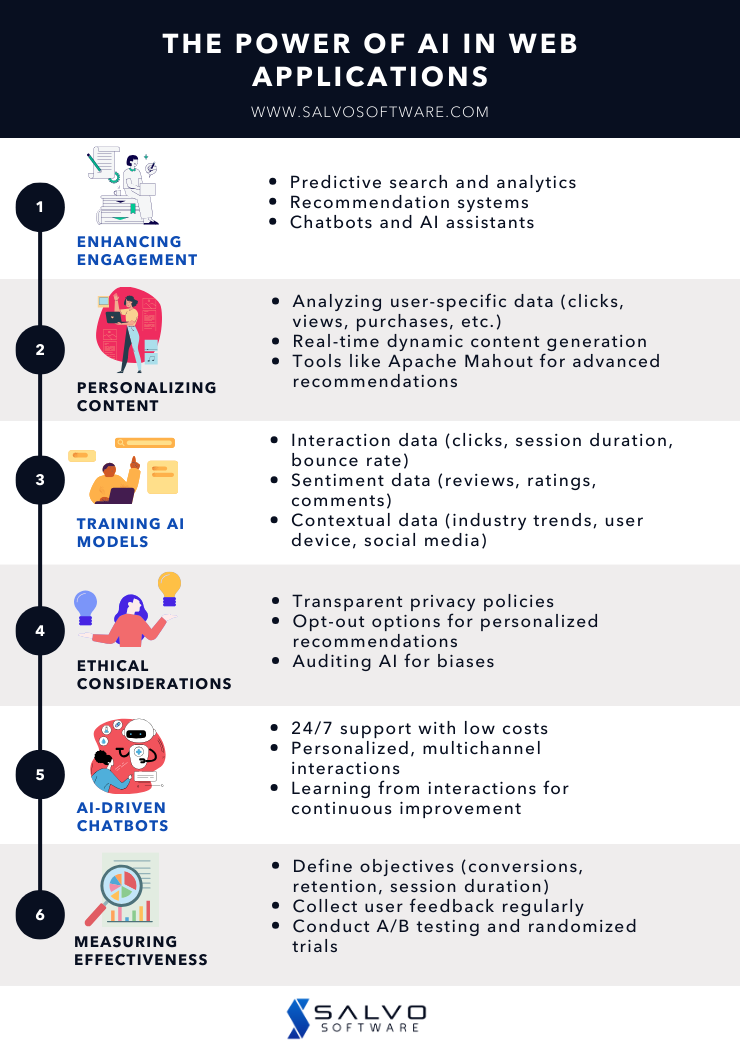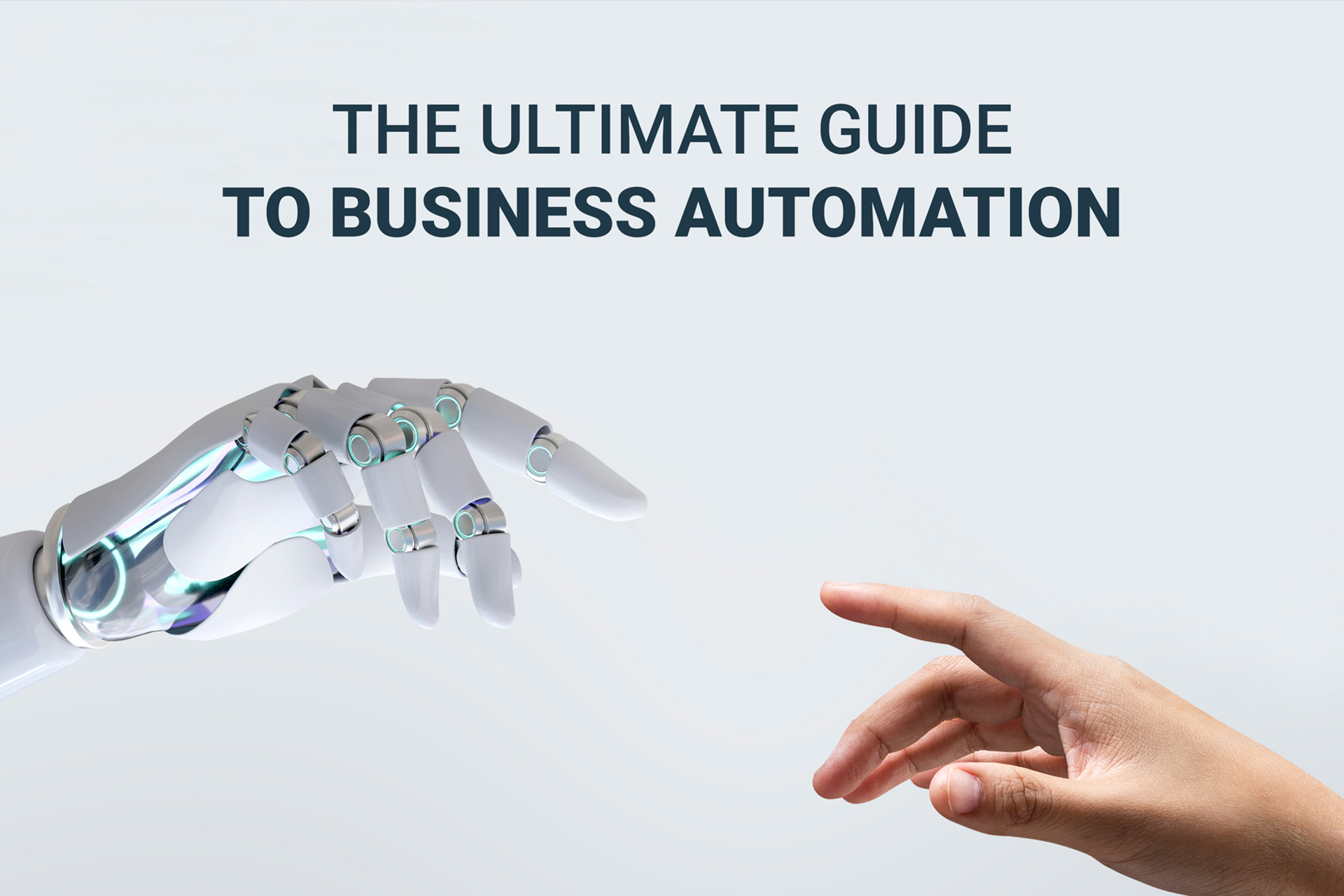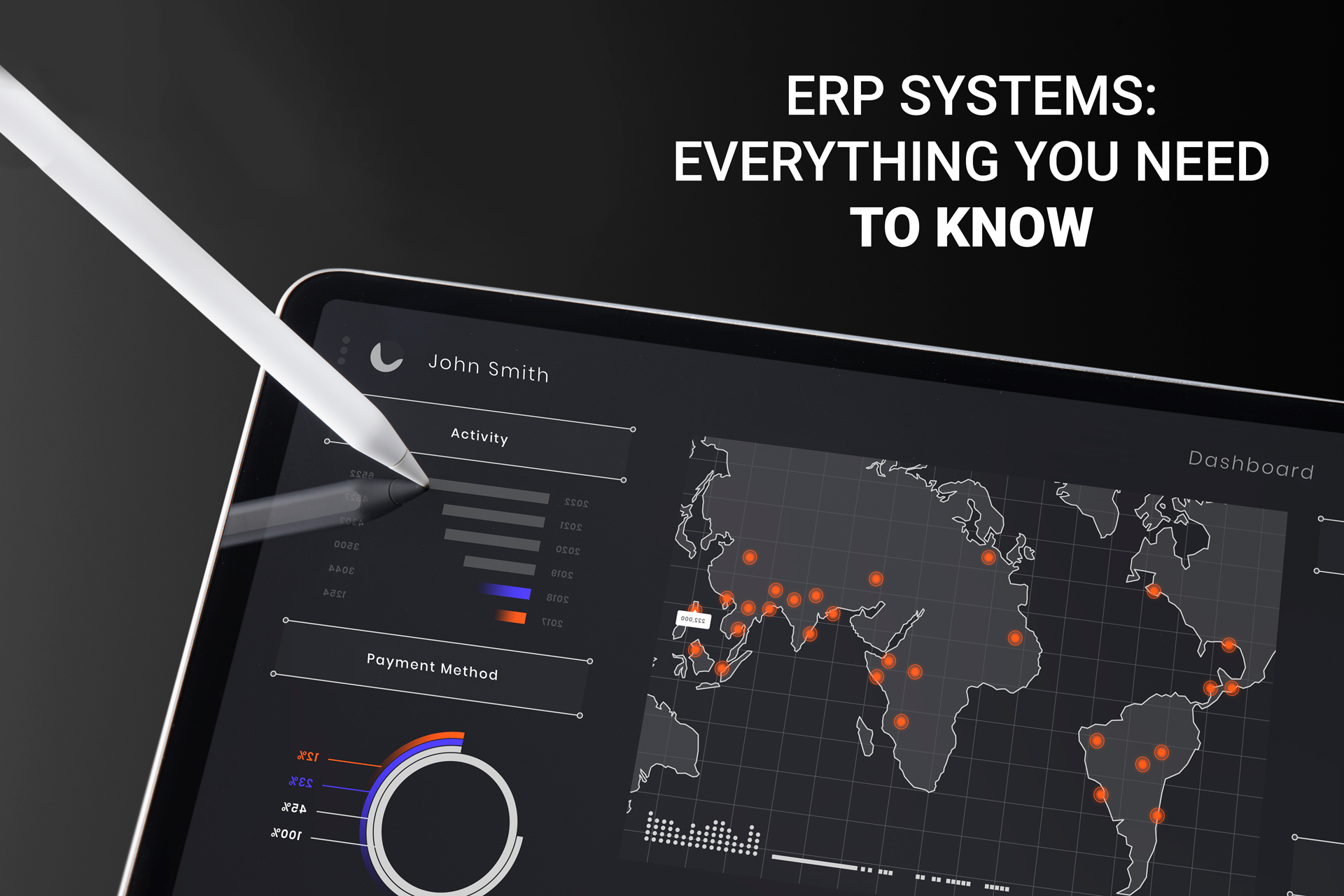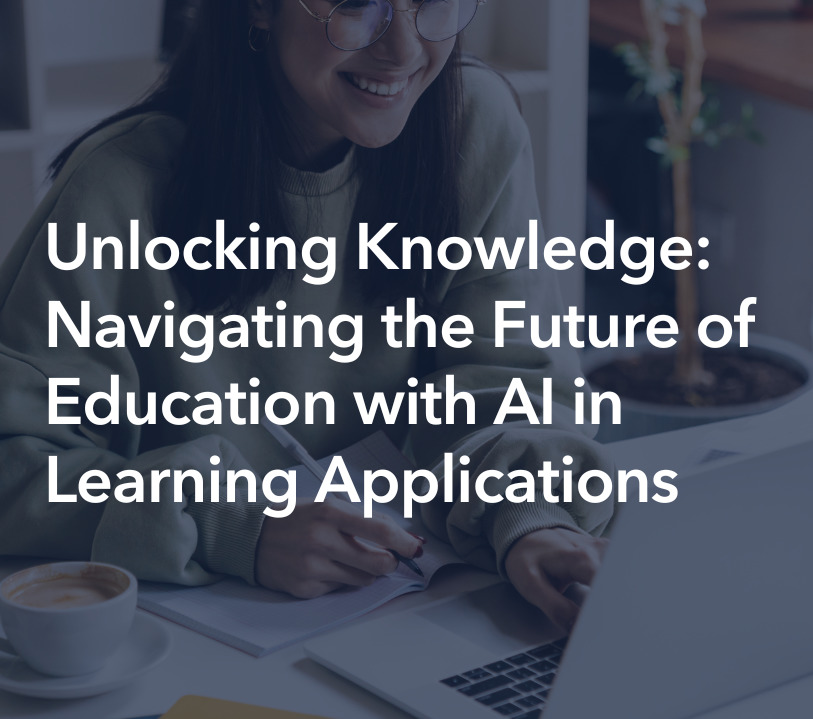Maximizing User Engagement: AI-Powered Features for Web Applications
From Airbnb to Zoom, at the core of every successful web app is strong user engagement. And AI-powered features can do amazing things for web applications – especially for engagement. Because when you can identify peaks and troughs in user attention in real-time, improving the user experience becomes a more scientific process.
Spotify & the Rise of Machine Learning
If you want a good example of how AI can empower a web app, look no further than Spotify. Until recently, the difference between Spotify and its nearest competitor boiled down to one thing: personalized music recommendations. And that was the defining feature of their nearest competitor.
But you don’t have to be first, you only have to be better. Spotify began to leverage Google’s TensorFlow, an open-source machine learning framework that’s great for things like image recognition, natural language processing, and building recommendation systems. And as a quick, cost-effective way to introduce AI into web apps, it can be ideal for this type of ongoing experimentation.
By intensively analyzing user data, from favorite artists and genres to everyday listening habits, Spotify was able to build highly sophisticated models of their individual listeners. Which gave birth to one of their most popular features, “Discovery Weekly,” which generates a brand-new playlist continually tailored to the ever-evolving tastes of the user.
The results speak for themselves. Eclipsing their nearest competition, Spotify is dominant steaming platform. Longer listening sessions and stronger user retention is what brought them from goodness to greatness, and made them a great example of how analyzing user data can help you deliver a wildly better product.
If someone eventually takes Spotify’s place at the top, it will no doubt be through the use of interaction optimization, personalization, and similar AI-powered features. But recommendation systems & dynamic content are just the tip of the iceberg of what you can achieve with AI.

AI-Powered Features FAQ
What types of AI-powered features can enhance user engagement in web applications?
AI in Web Application has transformative potential. From predictive search to predictive analytics, AI can make it much easier to guide people towards what they want to see. And keeping relevant content on your page is a foolproof way to boost engagement. Big players like YouTube and Netflix have been masters at doing this.
But some of the best work in the field right now is done with Google’s TensorFlow. Combining real time analytics with highly scalable development, TensorFlow is great for things like fraud detection, risk management, demand forecasts, inventory administration, or even algorithmic trading. For user engagement features, like recommendation systems, it has truly incredible range.
There’s also magnificent work being done with user-facing interactions. By now, most people have already had their first experiences with chatbots and AI assistants; many of us without even realizing it. Modern bots are excellent at answering simple questions and solving common customer problems, but they can also be applied towards things like taking orders, managing appointments, or even upselling products through personalization.
How can AI personalize content and experiences for individual users?
When you’ve got user-specific data, dynamic content generation becomes much easier. Because analyzing patterns and trends for correlations can deliver content optimized for engagement. You can even make those adaptations in real time, ensuring even a first-time user experience is excellent.
To achieve that kind of highly personalized content, you need data collected from things like clicks, views, purchases, preferences, past behavior, surveys, demographic information, etc. Basically – anything that can help you build out a more detailed user profile.
As people browse distinct categories or add certain items to a cart, web applications can flexibly adapt. For example, showing new product recommendations or links depending on how much interest someone shows in one topic or another.
But Apache Mahout is great for taking these kinds of recommendation engines into more creative directions, from marketing campaigns to churn analysis. Once you have detailed user profiles, the sky’s the limit.
What data is needed to train AI models for user engagement optimization?
AI models can train an immense variety of data. That includes obvious datasets like age, gender, and location, as well as data that you would have never considered important or relevant.
The best place to start is often with interaction data. For example, clicks, searches, scrolls, session duration, bounce rate, and so forth. Sentiment data is another piece of low-hanging fruit, which includes things like user reviews, ratings, and comments.
From there, you may also want to layer-on contextual data. That might include things like industry trends, competitor analysis, social media content, user device, user operating system, user’s time of day, or even how someone found your service.
But there’s also more subtle areas for data collection. Even something as seemingly inscrutable as purchase frequency can be invaluable information for certain types of tasks. For instance, if you discovered that people who don’t use your product for eight weeks are more likely to stop ordering, you might learn to intercede with a targeted email campaign during week six.
Are there any ethical considerations when implementing AI in web applications for user engagement?
It’s best practice to maintain transparent privacy policies. It can make the experience better, it promotes trust, and it can make it easier to stay in compliance with consumer privacy laws. Protecting privacy is mission critical, for both ethical and regulatory reasons.
You may consider letting people opt-out of personalized recommendations; or give them more granular control over privacy settings. That way, they can make more informed decisions over what happens to their data.
There’s one more big consideration: AI can develop biases out of its training data. That’s why it’s important to audit learning models for biases, identify when they are producing unfair outcomes, and work to mitigate the effects of those biases.
How can AI-driven chatbots improve user engagement and satisfaction?
Many people interact with chatbots without ever realizing it. For some tasks, they’ve become sophisticated enough to completely replace a small army of human support staff.
Providing night and day support with a small fraction of the cost, increasingly personalized AI chatbots are the future of high-quality user engagement. People can get the support they need when they need it most. And combined with multichannel support, user friction in these interactions can be brought near-zero by using messaging apps people are already familiar with.
Most importantly, modern machine learning techniques allow chatbots can learn from their interactions and get better over time. While AI can’t completely replace the all-important human element, it can feel up support staff to focus on the issues that absolutely demand human eyes.
What are some best practices for measuring the effectiveness of AI-powered features in enhancing user engagement?
Measuring efficacy begins with defining your objectives. That might be conversions, retention, survey satisfaction, session duration, better click through rates, and so on.
With your objectives established, you’ll want to continually collect user feedback to adapt your strategies. Regular feedback can be essential to ensuring that development is headed in the right direction.
Finally: test, test, test! Between A/B testing and randomized controlled trials, it’s critical to see how your different approaches to the problem are performing.
Improving Your Own Web Applications
Need guidance on what you can achieve with your web applications? Start your search with Salvo. With tools like Apache Mahout, TensorFlow, and Rasa, we can show you the route to unlock your own transformative, data-driven features with extreme scalability, efficiency, and countless opportunities for innovation. Our custom software solutions know how to mine out the potential value from AI at a price that makes sense for your project.



 The Ultimate Guide to Business Automation: What is It, Why is it Important, How Does it Work?
The Ultimate Guide to Business Automation: What is It, Why is it Important, How Does it Work?  Internet of Things (IoT): A Beginner’s Guide
Internet of Things (IoT): A Beginner’s Guide  ERP Systems: Everything You Need to Know
ERP Systems: Everything You Need to Know  Unlocking Knowledge: Navigating the Future of Education with AI in Learning Applications
Unlocking Knowledge: Navigating the Future of Education with AI in Learning Applications  Crafting Exceptional Experiences: Harnessing Design Thinking for UI/UX Problem Solving
Crafting Exceptional Experiences: Harnessing Design Thinking for UI/UX Problem Solving